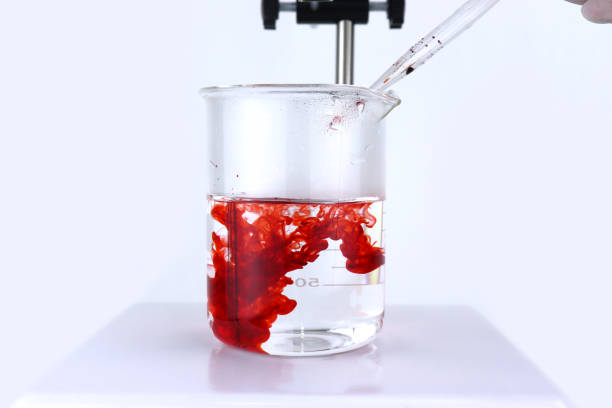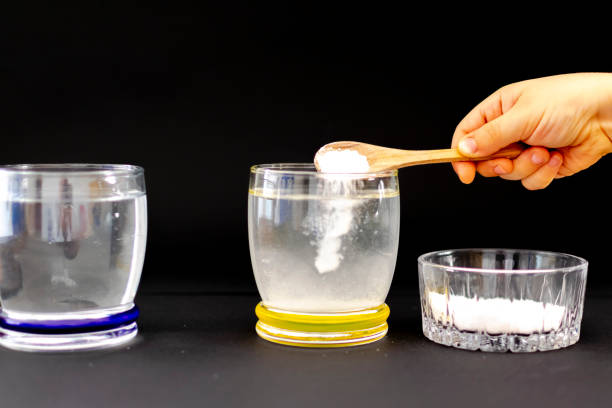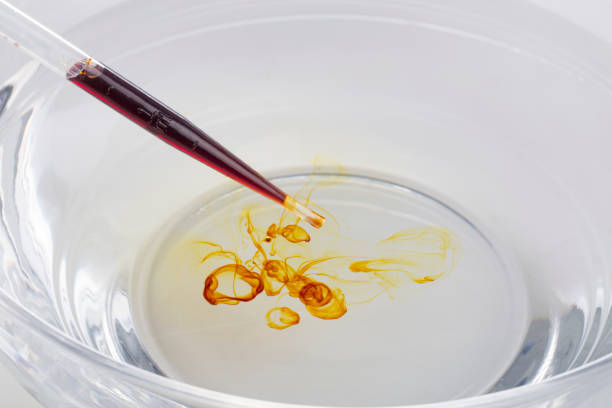Invisible ink has fascinated scientists, students, and secret agents for centuries. From ancient espionage to modern classroom experiments, this mysterious substance is more than just a trick, it’s a practical demonstration of chemistry, pH levels, oxidation reactions, and thermal sensitivity. In this comprehensive guide, we walk you through how invisible ink works, the science behind it, step-by-step invisible ink experiments, and safety precautions to keep in mind. Whether you’re a teacher, parent, student, or curious hobbyist, this article will provide everything you need to carry out a successful invisible ink experiment.
Invisible ink, also called security or sympathetic ink, is a substance used for hidden messages. These messages only become visible through specific methods like heat, UV light, chemical reactions, or oxidation.
Invisible ink is commonly made from household items, making it accessible and easy to experiment with at home or in classrooms. Some types of invisible ink are even non-toxic and safe for children, adding to their educational value.
Scientific Principle Behind Invisible Ink
The effectiveness of invisible ink lies in its chemical properties and how those properties react to external stimuli. Here are the most common mechanisms:
1. Acid-Base Reactions

pH indicators are key to some invisible inks, changing color in response to acids or bases. Common examples include lemon juice, vinegar, and baking soda water. When heated, the acids in substances like lemon juice and vinegar react with the paper’s fibers, leading to minor oxidation that reveals a brownish color.
2. Oxidation Reactions
This is especially true for organic compounds like milk or lemon juice. When heat is applied, the compounds oxidize, turning brown and making the hidden message visible.
3. UV Fluorescence
Substances like laundry detergent, tonic water, and some inks contain phosphors that glow under ultraviolet light. This method is used in more modern or secure applications of invisible ink.
Top 5 Easy Invisible Ink Experiments
1. Lemon Juice Invisible Ink (Heat-Revealed Message)
Materials Needed:
- Lemon
- Cotton swab or paintbrush
- White paper
- Heat source (lamp, iron, or candle)
Steps:
- Squeeze the lemon juice into a bowl.
- Dip the cotton swab into the juice and write a message on white paper.
- Allow the paper to dry completely.
- Hold the paper near a heat source (not directly over a flame).
- The message will appear brown as the juice oxidizes.
Scientific Explanation:
Lemon juice is acidic and slightly carbon-based. Heat causes the organic compounds in the juice to oxidize, revealing a dark brown imprint of your message.
2. Baking Soda and Grape Juice Invisible Ink (Acid-Base Reaction)
Materials Needed:
- Baking soda
- Water
- Cotton swab
- White paper
- Grape juice
Steps:
- Mix equal parts baking soda and water.
- Write your message with the mixture using a swab.
- Let the paper dry completely.
- Brush grape juice over the paper.
- The message will appear in a contrasting color.
Scientific Explanation:
Grape juice acts as a pH indicator. When it contact with the basic baking soda, a visible reaction takes place, producing a colored compound that reveals the hidden message.
3. Milk as Invisible Ink (Heat-Activated Message)

Materials Needed:
- Milk
- Cotton swab or paintbrush
- White paper
- Heat source
Steps:
- Dip the cotton swab in milk and write a message.
- Dry the paper thoroughly.
- Gently heat the paper to reveal the message.
Scientific Explanation:
Like lemon juice, milk contains organic compounds such as fats and proteins. Upon heating, these compounds oxidize and darken, bringing out the message.
4. Vinegar and Red Cabbage Juice Ink (Color Change Reaction)
Materials Needed:
- White vinegar
- Red cabbage
- Water
- Pot for boiling
- White paper
Steps:
- Boil chopped red cabbage to extract juice.
- Write a message with vinegar on paper and let it dry.
- Brush red cabbage juice over the paper.
- The acidic vinegar will change the color of the cabbage juice, revealing the message.
Scientific Explanation:
Red cabbage contains anthocyanins, which change color in response to pH levels. Vinegar is acidic, and when mixed with red cabbage juice, a visible color transformation occurs.
5. UV Light Invisible Ink (Fluorescence-Based)
Materials Needed:
- Highlighter ink (yellow or green)
- Cotton swab
- White paper
- UV flashlight
Steps:
- Carefully extract ink from a highlighter.
- Use the ink to write on paper.
- Shine a UV flashlight over the paper.
- The ink will glow under UV light.
Scientific Explanation:
Highlighter ink contains fluorescent compounds that become visible under ultraviolet light. These compounds absorb UV rays and re-emit them as visible light.
Applications of the Invisible Ink Experiment in Real Life
Invisible ink isn’t just a cool experiment, it has real-world applications in fields such as:
- Military and Espionage: Covert messages have been exchanged using invisible ink since ancient times.
- Banking and Security: Certain documents and currencies contain UV-reactive markings to prevent counterfeiting.
- Education and Fun: Teachers and parents use invisible ink to encourage creativity, learning, and problem-solving.
Safety Tips for Invisible Ink Experiments

- Always supervise children when using heat or UV light.
- Use protective gloves when handling strong acids or bases.
- Avoid placing paper too close to open flames; use indirect heat.
- Work in a well-ventilated area when using chemicals with strong odors.
Troubleshooting Common Issues
Message Doesn’t Appear After Heating:
Ensure the paper is completely dry before applying heat. Moisture can hinder oxidation.
No Color Change in pH Scale Experiments:
Make sure your indicator (e.g., grape or cabbage juice) is fresh and hasn’t degraded.
UV Ink Not Showing Up:
Try a darker room or a more powerful UV flashlight for better visibility.
Conclusion
The invisible ink experiment offers an exciting blend of science, creativity, and hands-on fun. Using only a few common household items, you can uncover chemical reactions, understand key scientific principles, and enjoy the thrill of writing secret messages like a real spy. This comprehensive guide delivers clear, step-by-step instructions along with the science behind each technique, making it ideal for students, teachers, and anyone eager to explore science engagingly.
What Is the Invisible Ink Experiment?
Invisible ink has fascinated scientists, students, and secret agents for centuries. From ancient espionage to modern classroom experiments, this mysterious substance is more than just a trick, it’s a practical demonstration of chemistry, pH levels, oxidation reactions, and thermal sensitivity. In this comprehensive guide, we walk you through how invisible ink works, the science behind it, step-by-step invisible ink experiments, and safety precautions to keep in mind. Whether you’re a teacher, parent, student, or curious hobbyist, this article will provide everything you need to carry out a successful invisible ink experiment.
Invisible ink, also called security or sympathetic ink, is a substance used for hidden messages. These messages only become visible through specific methods like heat, UV light, chemical reactions, or oxidation.
Invisible ink is commonly made from household items, making it accessible and easy to experiment with at home or in classrooms. Some types of invisible ink are even non-toxic and safe for children, adding to their educational value.
Scientific Principle Behind Invisible Ink experiment
The effectiveness of invisible ink lies in its chemical properties and how those properties react to external stimuli. Here are the most common mechanisms:
1. Acid-Base Reactions
pH indicators are key to some invisible inks, changing color in response to acids or bases. Common examples include lemon juice, vinegar, and baking soda water. When heated, the acids in substances like lemon juice and vinegar react with the paper’s fibers, leading to minor oxidation that reveals a brownish color.
2. Oxidation Reactions
This is especially true for organic compounds like milk or lemon juice. When heat is applied, the compounds oxidize, turning brown and making the hidden message visible.
3. UV Fluorescence
Substances like laundry detergent, tonic water, and some inks contain phosphors that glow under ultraviolet light. This method is used in more modern or secure applications of invisible ink.
Top 5 Easy Invisible Ink Experiments
1. Lemon Juice Invisible Ink (Heat-Revealed Message)
Materials Needed:
Lemon
Cotton swab or paintbrush
White paper
Heat source (lamp, iron, or candle)
Steps:
Squeeze the lemon juice into a bowl.
Dip the cotton swab into the juice and write a message on white paper.
Allow the paper to dry completely.
Hold the paper near a heat source (not directly over a flame).
The message will appear brown as the juice oxidizes.
Scientific Explanation:
Lemon juice is acidic and slightly carbon-based. Heat causes the organic compounds in the juice to oxidize, revealing a dark brown imprint of your message.
2. Baking Soda and Grape Juice Invisible Ink experiment (Acid-Base Reaction)
Materials Needed:
Baking soda
Water
Cotton swab
White paper
Grape juice
Steps:
Mix equal parts baking soda and water.
Write your message with the mixture using a swab.
Let the paper dry completely.
Brush grape juice over the paper.
The message will appear in a contrasting color.
Scientific Explanation:
Grape juice acts as a pH indicator. When it contact with the basic baking soda, a visible reaction takes place, producing a colored compound that reveals the hidden message.
3. Milk as Invisible Ink experiment (Heat-Activated Message)
Materials Needed:
Milk
Cotton swab or paintbrush
White paper
Heat source
Steps:
Dip the cotton swab in milk and write a message.
Dry the paper thoroughly.
Gently heat the paper to reveal the message.
Scientific Explanation:
Like lemon juice, milk contains organic compounds such as fats and proteins. Upon heating, these compounds oxidize and darken, bringing out the message.
4. Vinegar and Red Cabbage Juice Invisible Ink experiment (Color Change Reaction)
Materials Needed:
White vinegar
Red cabbage
Water
Pot for boiling
White paper
Steps:
Boil chopped red cabbage to extract juice.
Write a message with vinegar on paper and let it dry.
Brush red cabbage juice over the paper.
The acidic vinegar will change the color of the cabbage juice, revealing the message.
Scientific Explanation: Invisible Ink experiment
Red cabbage contains anthocyanins, which change color in response to pH levels. Vinegar is acidic, and when mixed with red cabbage juice, a visible color transformation occurs.
5. UV Light Invisible Ink experiment (Fluorescence-Based)
Materials Needed:
Highlighter ink (yellow or green)
Cotton swab
White paper
UV flashlight
Steps:
Carefully extract ink from a highlighter.
Use the ink to write on paper.
Shine a UV flashlight over the paper.
The ink will glow under UV light.
Scientific Explanation:
Highlighter ink contains fluorescent compounds that become visible under ultraviolet light. These compounds absorb UV rays and re-emit them as visible light.
Applications of Invisible Ink in Real Life
Invisible ink isn’t just a cool experiment, it has real-world applications in fields such as:
Military and Espionage: Covert messages have been exchanged using invisible ink since ancient times.
Banking and Security: Certain documents and currencies contain UV-reactive markings to prevent counterfeiting.
Education and Fun: Teachers and parents use invisible ink to encourage creativity, learning, and problem-solving.
Safety Tips for the Invisible Ink Experiment
Always supervise children when using heat or UV light.
Use protective gloves when handling strong acids or bases.
Avoid placing paper too close to open flames; use indirect heat.
Work in a well-ventilated area when using chemicals with strong odors.
Troubleshooting Common Issues
Message Doesn’t Appear After Heating:
Ensure the paper is completely dry before applying heat. Moisture can hinder oxidation.
No Color Change in pH Experiments:
Make sure your indicator (e.g., grape or cabbage juice) is fresh and hasn’t degraded.
UV Ink Not Showing Up:
Try a darker room or a more powerful UV flashlight for better visibility.
Conclusion: Invisible Ink experiment
The invisible ink experiment offers an exciting blend of science, creativity, and hands-on fun. Using only a few common household items, you can uncover chemical reactions, understand key scientific principles, and enjoy the thrill of writing secret messages like a real spy. This comprehensive guide delivers clear, step-by-step instructions along with the science behind each technique, making it ideal for students, teachers, and anyone eager to explore science engagingly.
How to make invisible ink or Invisible Ink Experiment?
1. Lemon Juice Invisible Ink (Heat-Revealed Message)
Materials Needed:
Lemon
Cotton swab or paintbrush
White paper
Heat source (lamp, iron, or candle)
Steps:
Squeeze the lemon juice into a bowl.
Dip the cotton swab into the juice and write a message on white paper.
Allow the paper to dry completely.
Hold the paper near a heat source (not directly over a flame).
The message will appear brown as the juice oxidizes.
Scientific Explanation: Invisible Ink Experiment
Lemon juice is acidic and slightly carbon-based. Heat causes the organic compounds in the juice to oxidize, revealing a dark brown imprint of your message.
2. Baking Soda and Grape Juice Invisible Ink (Acid-Base Reaction)
Materials Needed:
Baking soda
Water
Cotton swab
White paper
Grape juice
Steps:
Mix equal parts baking soda and water.
Write your message with the mixture using a swab.
Let the paper dry completely.
Brush grape juice over the paper.
The message will appear in a contrasting color.
Scientific Explanation: Invisible Ink Experiment
Grape juice acts as a pH indicator. When it contact with the basic baking soda, a visible reaction takes place, producing a colored compound that reveals the hidden message.
3. Milk as Invisible Ink (Heat-Activated Message)
Materials Needed:
Milk
Cotton swab or paintbrush
White paper
Heat source
Steps:
Dip the cotton swab in milk and write a message.
Dry the paper thoroughly.
Gently heat the paper to reveal the message.
Scientific Explanation: Invisible Ink Experiment
Like lemon juice, milk contains organic compounds such as fats and proteins. Upon heating, these compounds oxidize and darken, bringing out the message.
4. Vinegar and Red Cabbage Juice Ink (Color Change Reaction)
Materials Needed:
White vinegar
Red cabbage
Water
Pot for boiling
White paper
Steps:
Boil chopped red cabbage to extract juice.
Write a message with vinegar on paper and let it dry.
Brush red cabbage juice over the paper.
The acidic vinegar will change the color of the cabbage juice, revealing the message.
Scientific Explanation: Invisible Ink Experiment
Red cabbage contains anthocyanins, which change color in response to pH levels. Vinegar is acidic, and when mixed with red cabbage juice, a visible color transformation occurs.
5. UV Light Invisible Ink (Fluorescence-Based)
Materials Needed:
Highlighter ink (yellow or green)
Cotton swab
White paper
UV flashlight
Steps:
Carefully extract ink from a highlighter.
Use the ink to write on paper.
Shine a UV flashlight over the paper.
The ink will glow under UV light.
Scientific Explanation: Invisible Ink Experiment
Highlighter ink contains fluorescent compounds that become visible under ultraviolet light. These compounds absorb UV rays and re-emit them as visible light.
Applications of Invisible Ink in Real Life
Invisible ink isn’t just a cool experiment, it has real-world applications in fields such as:
Military and Espionage: Covert messages have been exchanged using invisible ink since ancient times.
Banking and Security: Certain documents and currencies contain UV-reactive markings to prevent counterfeiting.
Education and Fun: Teachers and parents use invisible ink to encourage creativity, learning, and problem-solving.
Safety Tips for Invisible Ink Experiments
Always supervise children when using heat or UV light.
Use protective gloves when handling strong acids or bases.
Avoid placing paper too close to open flames; use indirect heat.
Work in a well-ventilated area when using chemicals with strong odors.
Troubleshooting Common Issues
Message Doesn’t Appear After Heating: Invisible Ink Experiment
Ensure the paper is completely dry before applying heat. Moisture can hinder oxidation.
No Color Change in pH Experiments:
Make sure your indicator (e.g., grape or cabbage juice) is fresh and hasn’t degraded.
UV Ink Not Showing Up:
Try a darker room or a more powerful UV flashlight for better visibility.
Top 5 Easy Invisible Ink Experiments
1. Lemon Juice Invisible Ink (Heat-Revealed Message)
Materials Needed: Invisible Ink experiment
Lemon
Cotton swab or paintbrush
White paper
Heat source (lamp, iron, or candle)
Steps:
Squeeze the lemon juice into a bowl.
Dip the cotton swab into the juice and write a message on white paper.
Allow the paper to dry completely.
Hold the paper near a heat source (not directly over a flame).
The message will appear brown as the juice oxidizes.
Scientific Explanation: Invisible Ink Experiment
Lemon juice is acidic and slightly carbon-based. Heat causes the organic compounds in the juice to oxidize, revealing a dark brown imprint of your message.
2. Baking Soda and Grape Juice Invisible Ink (Acid-Base Reaction)
Materials Needed: Invisible Ink experiment
Baking soda
Water
Cotton swab
White paper
Grape juice
Steps:
Mix equal parts baking soda and water.
Write your message with the mixture using a swab.
Let the paper dry completely.
Brush grape juice over the paper.
The message will appear in a contrasting color.
Scientific Explanation: Invisible Ink experiment
Grape juice acts as a pH indicator. When it contact with the basic baking soda, a visible reaction takes place, producing a colored compound that reveals the hidden message.
3. Milk as Invisible Ink (Heat-Activated Message)
Materials Needed:
Milk
Cotton swab or paintbrush
White paper
Heat source
Steps:
Dip the cotton swab in milk and write a message.
Dry the paper thoroughly.
Gently heat the paper to reveal the message.
Scientific Explanation: Invisible Ink experiment
Like lemon juice, milk contains organic compounds such as fats and proteins. Upon heating, these compounds oxidize and darken, bringing out the message.
4. Vinegar and Red Cabbage Juice Ink (Color Change Reaction)
Materials Needed:
White vinegar
Red cabbage
Water
Pot for boiling
White paper
Steps:
Boil chopped red cabbage to extract juice.
Write a message with vinegar on paper and let it dry.
Brush red cabbage juice over the paper.
The acidic vinegar will change the color of the cabbage juice, revealing the message.
Scientific Explanation: Invisible Ink experiment
Red cabbage contains anthocyanins, which change color in response to pH levels. Vinegar is acidic, and when mixed with red cabbage juice, a visible color transformation occurs.
5. UV Light Invisible Ink (Fluorescence-Based)
Materials Needed:
Highlighter ink (yellow or green)
Cotton swab
White paper
UV flashlight
Steps:
Carefully extract ink from a highlighter.
Use the ink to write on paper.
Shine a UV flashlight over the paper.
The ink will glow under UV light.
Scientific Explanation:
Highlighter ink contains fluorescent compounds that become visible under ultraviolet light. These compounds absorb UV rays and re-emit them as visible light.
Applications of Invisible Ink in Real Life
Invisible ink isn’t just a cool experiment, it has real-world applications in fields such as:
Military and Espionage: Covert messages have been exchanged using invisible ink since ancient times.
Banking and Security: Certain documents and currencies contain UV-reactive markings to prevent counterfeiting.
Education and Fun: Teachers and parents use invisible ink to encourage creativity, learning, and problem-solving.
Safety Tips for Invisible Ink Experiments
Always supervise children when using heat or UV light.
Use protective gloves when handling strong acids or bases.
Avoid placing paper too close to open flames; use indirect heat.
Work in a well-ventilated area when using chemicals with strong odors.
Troubleshooting Common Issues
Message Doesn’t Appear After Heating:
Ensure the paper is completely dry before applying heat. Moisture can hinder oxidation.
No Color Change in pH Experiments:
Make sure your indicator (e.g., grape or cabbage juice) is fresh and hasn’t degraded.
UV Ink Not Showing Up:
Try a darker room or a more powerful UV flashlight for better visibility.
